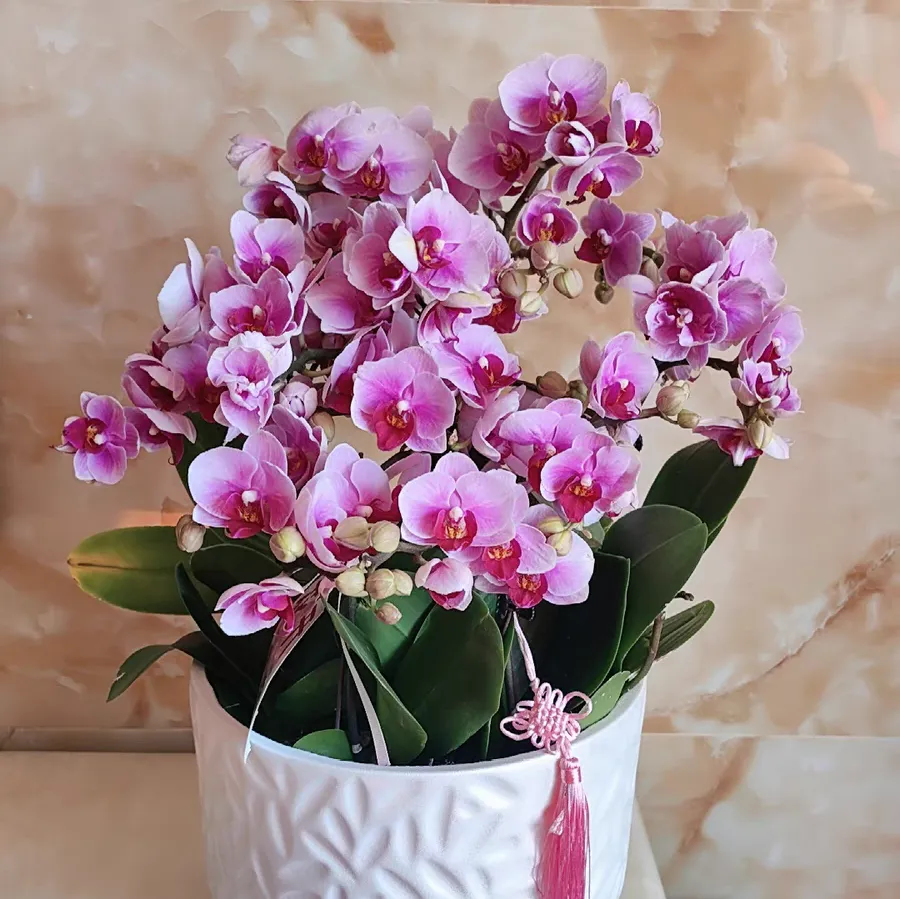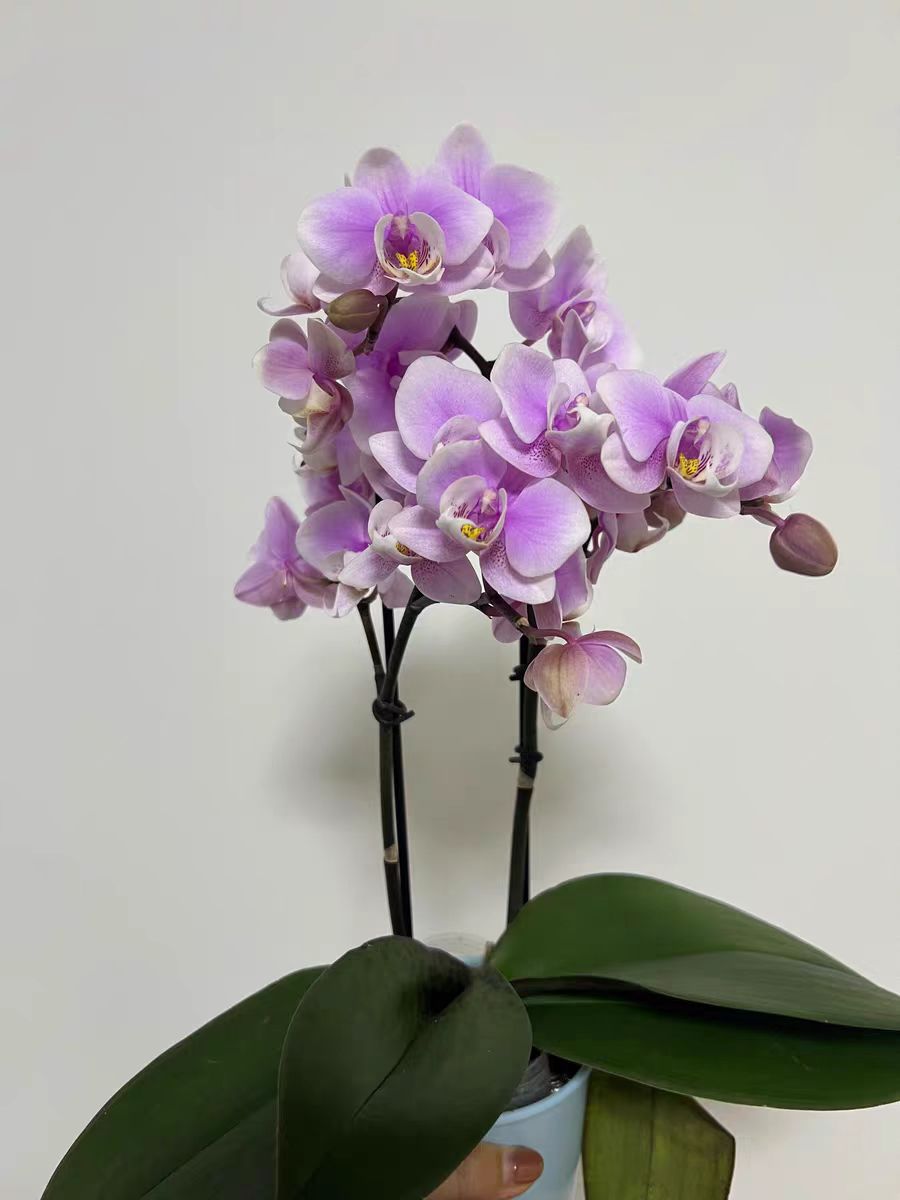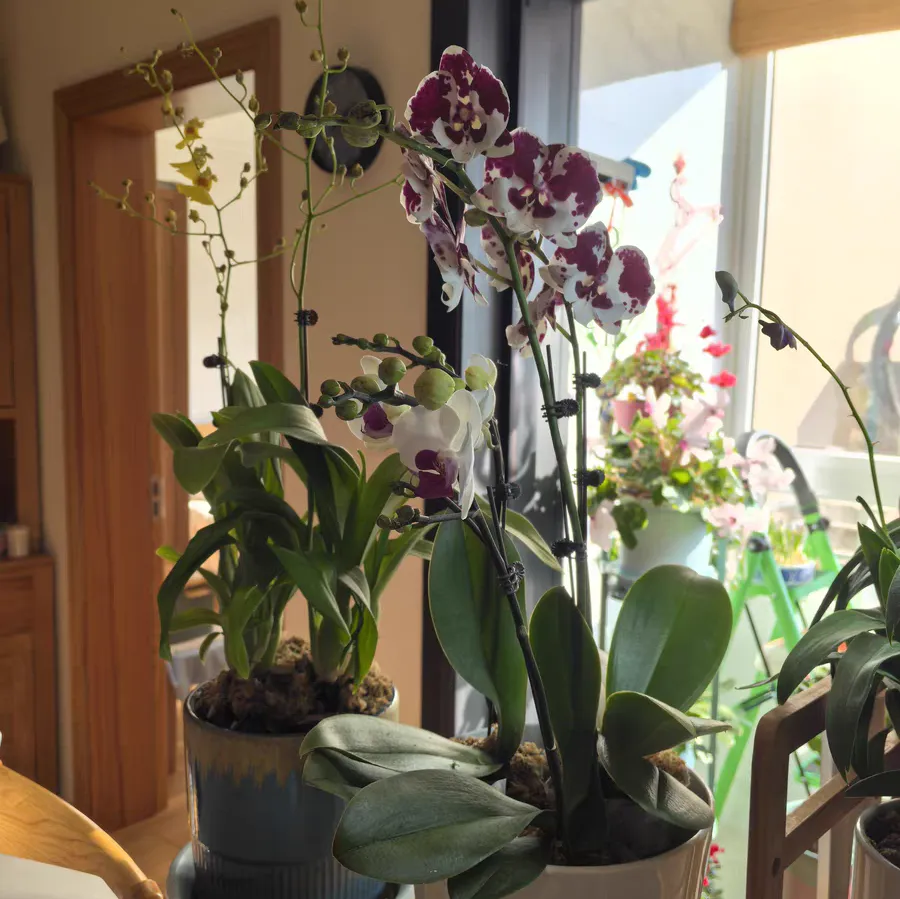During the process of cultivating Phalaenopsis, one of the most frustrating things is probably seeing its aerial roots dry out! Aerial roots are of great significance to Phalaenopsis. They can not only absorb water and nutrients from the air but also stabilize the plant. Today, let's talk in detail about what to do when the aerial roots dry out.
First, find out the reasons
- Low humidity: Phalaenopsis prefers a humid environment. Once the air is too dry, the water in the aerial roots will evaporate rapidly. Situations such as turning on the heating in winter in the north or using air - conditioners in summer in the south often lead to sub - standard indoor humidity, causing the aerial roots to suffer.
- Improper watering: Either too little water is given, leaving the planting medium in a long - term drought state, so that the aerial roots cannot get the necessary moisture; or too much water is poured, causing the roots to rot due to lack of oxygen, thus hindering the transportation of water and nutrients, and the aerial roots are also affected.
- Problems with the planting medium: If the planting medium is not breathable enough or has poor water - retaining capacity, it cannot create a good growth condition for the roots. For example, using inappropriate soil, or the sphagnum moss aging and the bark deteriorating will make the aerial roots "uncomfortable".
Solutions
- Increase humidity: You can place a humidifier next to the Phalaenopsis and adjust the humidity to the appropriate range of 50% - 70%, so that the aerial roots can comfortably absorb water. You can also place the flower pot on a shallow tray filled with water and stones, using the evaporation of water to increase the surrounding humidity.
- Adjust watering: First, check the dry - wet condition of the planting medium. When it is dry, water it thoroughly. When watering, do not be too hasty. Water slowly to ensure that the planting medium fully absorbs the water. If the roots have rotted due to excessive watering before, take the plant out of the pot, cut off the rotten roots, disinfect them with carbendazim solution, and then replant it with clean and breathable planting medium.
- Treatment of the planting medium: If there are problems with the planting medium, it must be replaced decisively! Sphagnum moss needs to be soaked and squeezed dry before use, and the bark should be clean and of an appropriate size. When replacing the planting medium, be careful to avoid damaging the roots. After replacement, place the plant in a cool and ventilated place for acclimatization.
Daily prevention
- Regular inspection: Pay more attention to the growth of Phalaenopsis in daily life. Check the state of the aerial roots at least once a week to discover and deal with problems in a timely manner.
- Scientific fertilization: Regularly apply thin, special fertilizers for orchids to enhance the stress resistance of Phalaenopsis and make its roots stronger. However, pay attention to controlling the amount of fertilization to avoid root burning caused by excessive fertilization.
Dear friends, cultivating Phalaenopsis requires careful attention. As long as you master the methods and deal with problems in a timely manner, you can make the aerial roots of Phalaenopsis grow healthily and make the plant bloom profusely every year!
What are the reasons for the drying of the aerial roots of Phalaenopsis?

Share with
Tagged in :




Leave a Reply